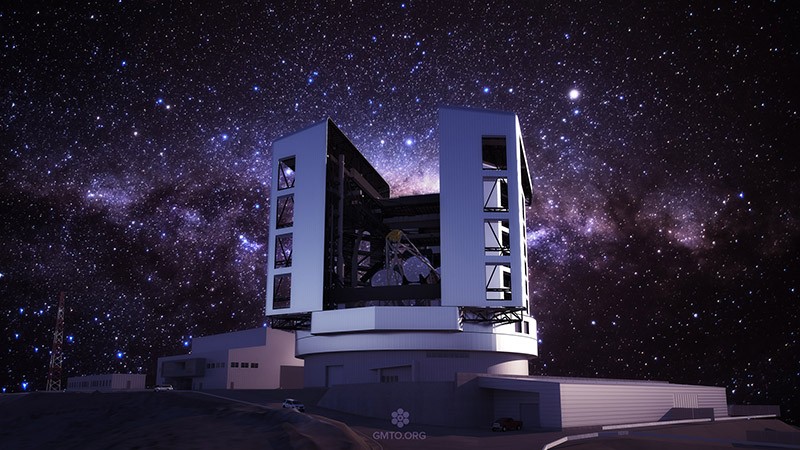It’s that time again. Once every ten years, the American astronomy community joins forces through the auspices of the National Academies to produce one of the most important and influential reports in their discipline – the decadal survey. This report has been the impetus for some of the great observational instruments of our time, including Spitzer, the Large Millimeter Array, and Chandra. Upcoming heavy-hitting observatories, such as Nancy Grace Roman and Vera C. Rubin, also spawned from suggestions made in the Decadal Survey. In short, if you want to get a grandiose space telescope funded, your best bet is to have it supported by the National Academies in the form of the Decadal Survey. Now a new one is out – so what does it back for the upcoming decade and beyond?
The report itself is broken down into three “priority scientific areas:”
New Messengers and New Physics Cosmic Ecosystem Worlds and Suns in Context One of the primary outcomes from the Decadal survey is suggesting where the money should go. This graph helps understand the breakdown of that spending.
One of the primary outcomes from the Decadal survey is suggesting where the money should go. This graph helps understand the breakdown of that spending.
Credit – National Academies
These are further broken down into 24 individual questions that the report hopes scientists can answer shortly, ranging from “What are the mass and spin distributions of neutron stars and black holes” to “How do the Sun and other stars create space weather?” All valid questions, but arguably the most critical part of the report, are the suggested methods to answer those questions – particularly what projects it suggests for funding.
The most eye-catching of those proposed missions was an infrared / optical / ultraviolet space-based telescope that would be the most sensitive ever launched. Very similar in scope to LUVOIR, one of the primary missions of this massive project would be to search for biosignatures on at least 25 extrasolar planets. As a bonus, it could help address two-thirds of the questions posed by the survey.
Up for some more crazy telescope ideas? UT has got you covered.Don’t expect any results anytime soon, though – the survey suggests that the earliest launch date for any such ambitious project would be 2039 – almost 20 years from now. It could cost as much as $11 billion, but if the cost overruns of the James Webb Space Telescope are any indication, that figure would likely end up much higher.
But the report also suggests not putting all of the scientific community’s eggs in one basket. It supports an idea floated by NASA to launch a series of “probe” missions that will cap out at about $1.5 billion and launch every ten years. These “medium” capability missions would allow scientists to continually work with new data as they are simultaneously developing the next great mission that will be collecting data ten years from now.
And yet more ideas touted for the future of telescopic space exploration.The report also suggests the “Great Observatories Mission and Technologies Maturation Program” to support that continual development path.” While not directly tied to any one mission, this would represent a “[change] in the way projects are planned and developed.” It suggests that several large-scale missions could be co-developed simultaneously with technological overlap to ease their development pathways.
Two of those pathways would point towards other “Great Observatory” missions – a Far-IR mission and an X-ray mission, each of which would cost between $3 and $5 billion. These would fill in the spectral gaps noticeable in the flagship LUVOIR equivalent and allow scientists updated access to almost all spectra of light data that they need to fully understand what they see.
Some spectacular telescopes, such as the concepts discussed in this UT video, make their home on the ground.There is one noticeable gap in that spectral band, though – radio. America’s National Science Foundation (NSF) runs most of its primarily ground-based radio observatories. The report suggests that NSF should develop an upgrade to the Very Large Array and Very Long Baseline Array, two of the current workhorses of radio astronomy. Known (not so creatively) as the Next-Generation Very Large Array, ideally, the new system would have ten times the observational capabilities of the existing radio telescopes. It could be online early in the next decade.
Other NSF projects supported by the report include investments in the Cosmic Microwave Background Stage 4 Observatory, the Giant Magellan Telescope, and Thirty Meter Telescope, all of which have the potential to offer “transformative” scientific results. The investments should allow them to continue doing so for the next decade.
 Artist’s concept of the Giant Magellan Telescope.
Artist’s concept of the Giant Magellan Telescope.
Credit – Giant Magellan Telescope / GMTO Organization
Overall, the program suggests billions of dollars in funding for a cornucopia of scientific projects and has received generally positive feedback from the community. Now, it’s up to Congress and the various federal agencies to decide whether they want the suggest the Survey’s advice, and if so, to what degree. There’s still a long way to go before any project supported in the report sees the light of day, but this is a great step for the astrophysics and astronomy community.
Learn More:
National Academies – New Report Charts Path for Next Decade of Astronomy and Astrophysics; Recommends Future Ground and Space Telescopes, Scientific Priorities, Investments in Scientific Community
National Academies – Pathways to Discovery in Astronomy and Astrophysics for the 2020s
Nature – US astronomy’s 10-year plan is super-ambitious
NRAO – Next Generation Very Large Array Strongly Endorsed by Decadal Survey
UT – Dream About the Future of Big Telescopes; Monster Space Telescopes That Could Fly by the 2030s
Lead Image:
Artist’s concept of an exoplanet
Credit – National Academies

